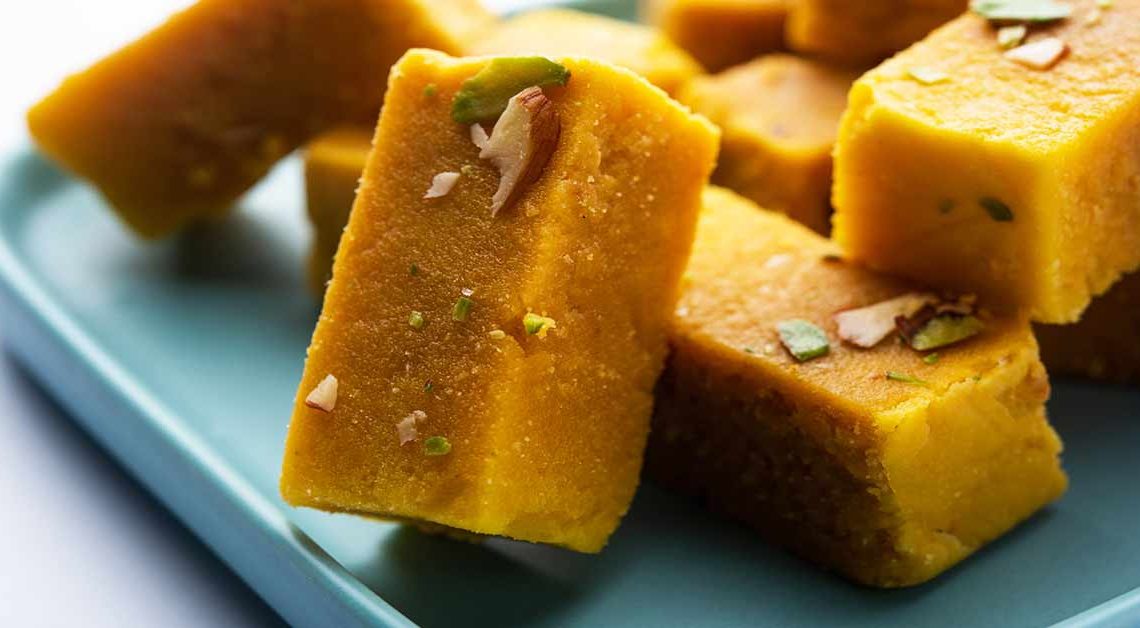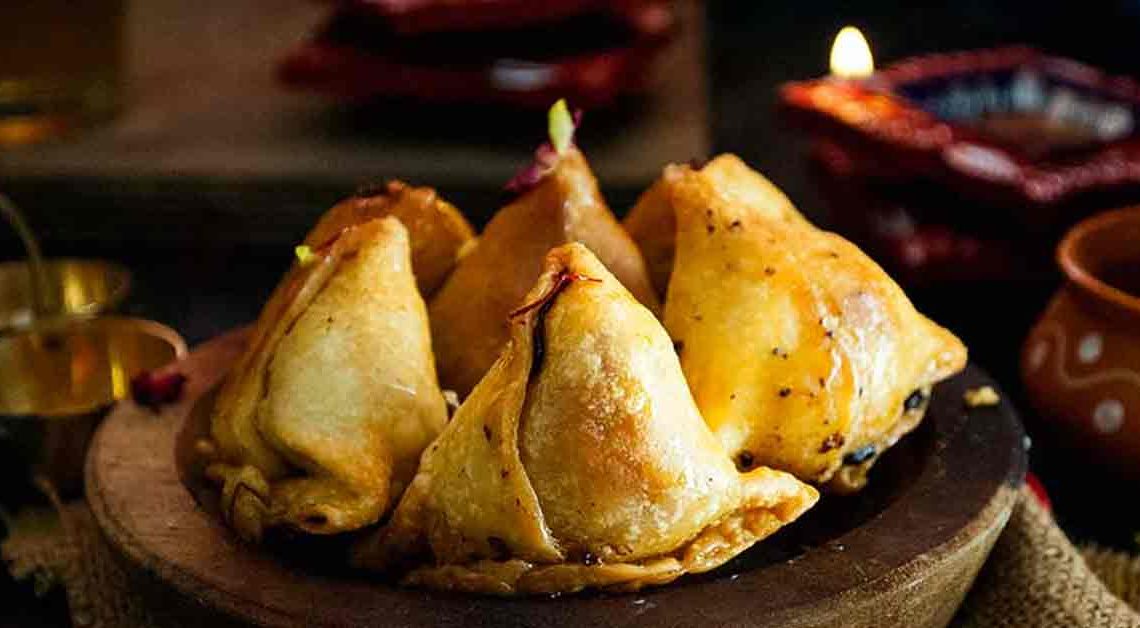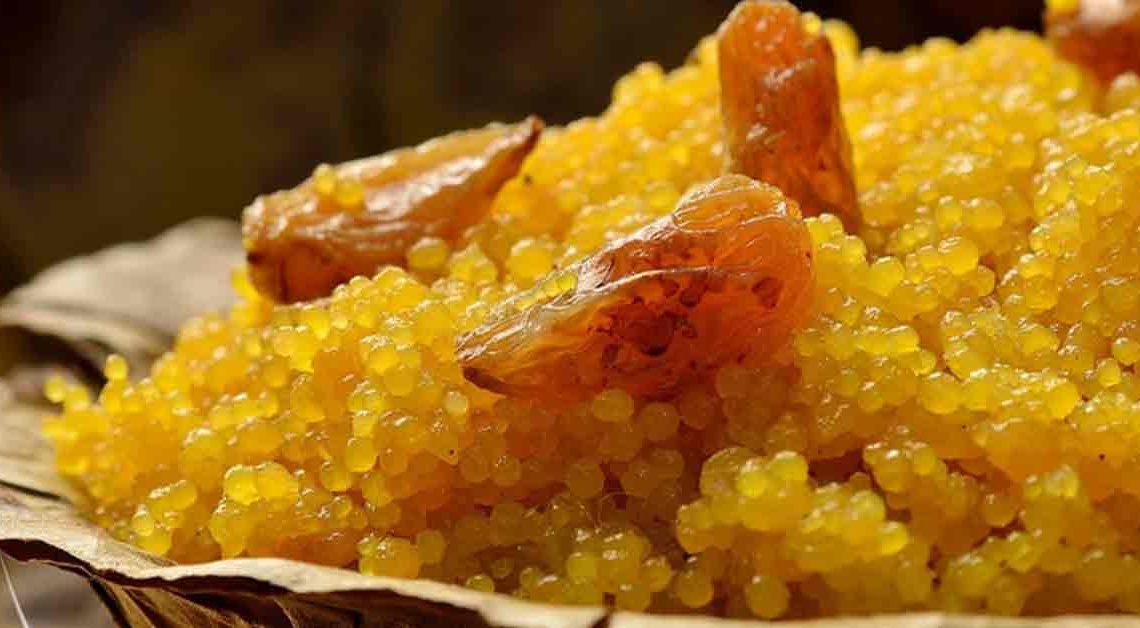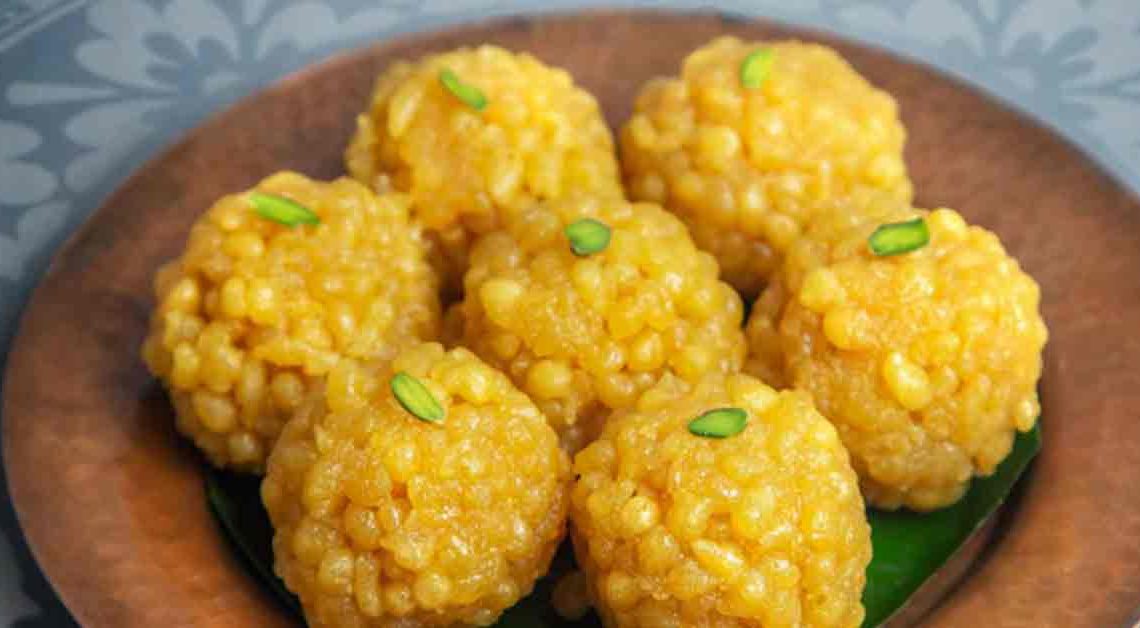India’s Favorite Sweet: Mysore Pak

Welcome to “Mithainama,” a delightful journey into the world of sweet wonders! Here, we embark on a mouthwatering adventure, exploring one of India’s most cherished traditional treats – Mysore Pak! With every bite, this scrumptious delicacy transports us back in time, whispering stories of royal kitchens, culinary legends, and the essence of pure indulgence.
Picture yourself in the heart of Karnataka, where the air is filled with the aroma of ghee, besan (gram flour), and caramelized sugar. Mysore Bonda, a regal sweet that has enthralled generations, stands as a symbol of love, festivity, and exquisite craftsmanship. The intricate process of making it is an art form itself, passed down from expert hands to devoted hearts.
In Mithainama, we dive into the rich history and cultural significance of Mysore Pak, tracing its origins to the royal city of Mysore. Along the way, we’ll meet the custodians of age-old recipes and explore the fascinating facts that add flavor to its enchanting tale.
Origin of Mysore Pak
The origin of Mysore Sweet can be traced back to the royal city of Mysuru (formerly known as Mysore) in the state of Karnataka, India. It was created during the 19th century by a royal cook named Kakasura Madappa. Madappa was a renowned chef in the court of the Mysore palace, under the patronage of King Krishna Raja Wadiyar IV.
The story goes that Madappa was experimenting with different ingredients in the palace kitchen when he stumbled upon the recipe for what we now know as Mysore Pak. He mixed together generous amounts of ghee, gram flour (besan), and sugar, creating a rich and delectable sweet that delighted the royal taste buds.
The sweet’s popularity spread rapidly among the members of the royal family and the palace staff. Impressed with the invention, the king asked the chef about the name of the dish. In response, Madappa humbly said, “Mysuru Paaka” (meaning “sweet from Mysuru”), which eventually evolved into “Mysore Bonda.”
History of Mysore Pak
The history of Mysore Bonda dates back to the 19th century in the royal city of Mysuru (Mysore), Karnataka, India. The sweet was invented by a royal cook named Kakasura Madappa during the reign of King Krishna Raja Wadiyar IV.
Legend has it that Madappa, the talented chef in the Mysore palace, was experimenting with various ingredients when he stumbled upon the recipe for what would become Mysore Sweet. The key ingredients of this delectable sweet are ghee (clarified butter), gram flour (besan), and sugar, which Madappa combined in precise proportions to create a rich, mouthwatering confection.
Initially, it was considered a delicacy reserved for royal events and special occasions within the palace. However, its popularity grew exponentially, and it eventually transcended the palace walls, becoming a favorite among the people of Mysuru and the entire state of Karnataka.
Cultural Significance
Mysore Bonda holds significant cultural importance, especially in the southern regions of India, particularly in Karnataka and Tamil Nadu. Its cultural significance is rooted in several aspects:
Traditional Festivities: It is an integral part of various traditional festivals and celebrations. During occasions like Diwali, Navaratri, weddings, and other festive events, Mysore Sweet is prepared and shared as a symbol of joy, prosperity, and togetherness.
Royal Heritage: As its name suggests, Mysore Sweet has its origins in the royal city of Mysuru. Its creation by the royal cook Kakasura Madappa and its association with the palace adds a touch of regality to the sweet, making it a delicacy with a royal heritage.
Family Bonding: The process of making Mysore Sweet is often a family affair during festivals and gatherings. Preparing this sweet involves multiple hands working together, fostering a sense of unity and shared experience among family members.
Where is Mysore Pak Famous?
Mysore Pak is famous primarily in the southern regions of India, particularly in the states of Karnataka and Tamil Nadu. It has its roots in the royal city of Mysuru (Mysore), which is located in Karnataka. Hence, Mysuru remains one of the most iconic and significant places for Mysore Bonda.
Mysuru, Karnataka: Mysuru is the birthplace of Mysore Pak and is renowned for its authentic and delectable versions of this sweet. The city takes immense pride in its culinary heritage, and is a must-try delicacy for locals and tourists alike.
Bengaluru, Karnataka: As the capital city of Karnataka, Bengaluru also boasts a thriving sweet culture, and is a popular sweet available in various sweet shops and eateries across the city.
Andhra Pradesh and Telangana: In some parts of Andhra Pradesh and Telangana, Mysore Bonda is relished as a cherished treat during festivals and special occasions.
Interesting Facts and Trivia
Certainly! Here are some interesting facts and trivia related to Mysore Pak:
- It was originally created in the 19th century by Kakasura Madappa, a royal cook in the court of King Krishna Raja Wadiyar IV in the city of Mysuru, Karnataka, India.
- One fascinating aspect of the traditional Mysore Pak recipe is that it doesn’t require any water during preparation. The moisture from the melted ghee and gram flour is enough to create the perfect consistency.
- While the classic Mysore Bonda is a golden-hued sweet, today, numerous variations exist, including chocolate Mysore Pak, dry fruit Mysore Sweet, and even sugar-free versions to cater to different tastes and dietary preferences.
- Mysore Sweet holds immense cultural significance in Karnataka and has been declared the official “State Sweet” of the region.
- In 2019, the city of Mysuru made history by creating the largest Mysore Sweet ever, weighing a whopping 3,700 kg (8,157 pounds), and setting a Guinness World Record for the largest serving of the sweet.
Did You Know?
Benefits of Consuming Mysore Pak:
- Energy Booster: Its primary ingredients, ghee, and besan, are rich sources of healthy fats and carbohydrates, providing a quick and sustained energy boost.
- Nutrient-Rich: Gram flour is a good source of protein, dietary fiber, and essential minerals like iron, magnesium, and zinc, making sweet a more nutrient-dense treat compared to conventional sweets.
- Mindful Indulgence: When enjoyed in moderation, Mysore Sweet can be a satisfying indulgence, as its rich taste and texture encourage mindful eating and satiation with a smaller serving.
- Source of Antioxidants: Ghee in it contains fat-soluble vitamins like A, D, E, and K, along with antioxidants that help protect the body from free radicals.
- Cultural Connection: Consuming Mysore Sweet allows you to savor a delectable treat with deep cultural roots, connecting you to the royal heritage and culinary traditions of Karnataka.







